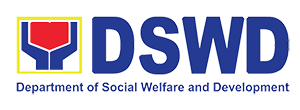MANILA – Department of Social Welfare and Development (DSWD) Secretary Corazon Juliano-Soliman said that empowering the communities affected by Typhoon Yolanda through its program, Kapit-Bisig Laban sa Kahirapan-Comprehensive and Integrated Delivery of Social Services (Kalahi-CIDSS), remains a priority of the Agency.
After the onslaught of Typhoon Yolanda in 2013, the DSWD expanded the Kalahi-CIDSS implementation to help in the rehabilitation of affected communities.
Kalahi-CIDSS utilizes the community-driven development (CDD) strategy, in which citizens are given direct control over decisions and resources so they can implement solutions to help resolve localized problems, particularly those that are poverty-related.
Yolanda updates
As of July 2015, 541 of the 554 municipalities targeted by Kalahi-CIDSS have already enrolled in the program and are at different stages of project implementation.
“Masaya kami na mas madali na ang transportasyon dito sa aming barangay dahil naayos na ang kalsada na dati ay maputik at mahirap daanan tuwing tag-ulan (We are happy that transportation in our village is easier now because we were able to repair the road which used to become muddy and hard to traverse whenever it rained),” said 40-year old Reynaldo Enaje Jr., on the completed rehabilitation of their barangay road in Brgy. Laurel in Tagkawayan, Quezon Province.
To date, there are 844 completed Kalahi-CIDSS sub-projects constructed across 145 Yolanda-affected municipalities, while 1,679 sub-projects are undergoing construction and are expected to be completed this year. Meanwhile, 10,341 sub-projects are yet to start. The total KC grant for these sub-projects amounts to P10.4 Billion.
Secretary Soliman revealed that there has been a slight change in the prioritization of sub-projects identified by communities affected by Yolanda. Unlike before when basic social services such as health stations, school buildings, and water systems were the top priority of communities, Yolanda-affected areas now implement more basic access infrastructure sub-projects (34%), such as small roads, bridges, and pathways, then followed by basic social services which comprise 29% of the total prioritized sub-projects.
Trust in Kalahi-CIDSS
Kalahi-CIDSS is funded through a combination of resources from the Philippine government and a mix of development partners. Four of these are providing funds for Yolanda post-disaster recovery and rehabilitation: the World Bank (WB), the Asian Development Bank (ADB), the Japan Fund for Poverty Reduction (JFPR), and the Government of Australia-Department of Foreign Affairs and Trade (GoA-DFAT).
Savings from the Kalahi-CIDSS Additional Financing (KC-AF), which ended last 2014, was utilized for the rehabilitation of 32 sub-projects in Eastern Visayas, Davao, and CARAGA.
The Kalahi-CIDSS Millennium Challenge Corporation (KC-MCC) project, which is partly funded by the MCC of the USA, also continued its operation in 76 municipalities affected by Typhoon Yolanda.
Since December 2013, it has funded a total of 1,393 subprojects in these areas. As of July 2015, 511 of these sub-projects have been completed, while 882 are expected to be finished by December.
Savings from the subprojects were also utilized for the rehabilitation of 67 sub-projects in Aklan, Antique, Biliran, Bohol, Leyte and Samar.
Secretary Soliman said that the funds poured into the program is proof that international development partners have faith in the concept of having communities drive development.
“Kalahi-CIDSS showed that CDD works even in a disaster setting. Not only does it make communities respond to disasters more quickly, the fact that the people themselves make these projects has shown that the small-scale infrastructures they produce can withstand a disaster as strong as Yolanda,” she said.
She continued, “It is not enough that we help communities that were affected by Yolanda. In the long run, we also need to increase the capacity of people so that they can become more resilient against disasters, even those that are as strong as Yolanda. This is especially true for the poor and the vulnerable.” ###


